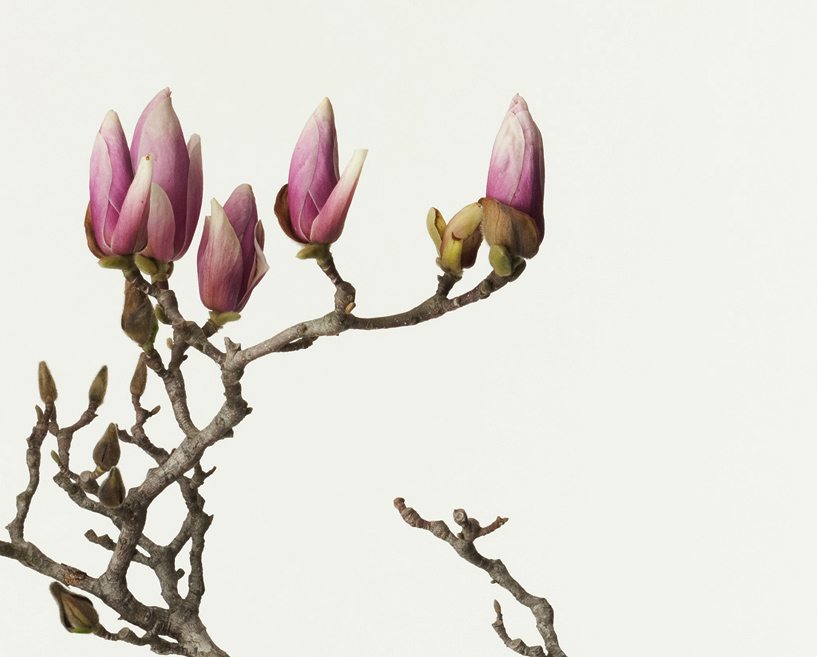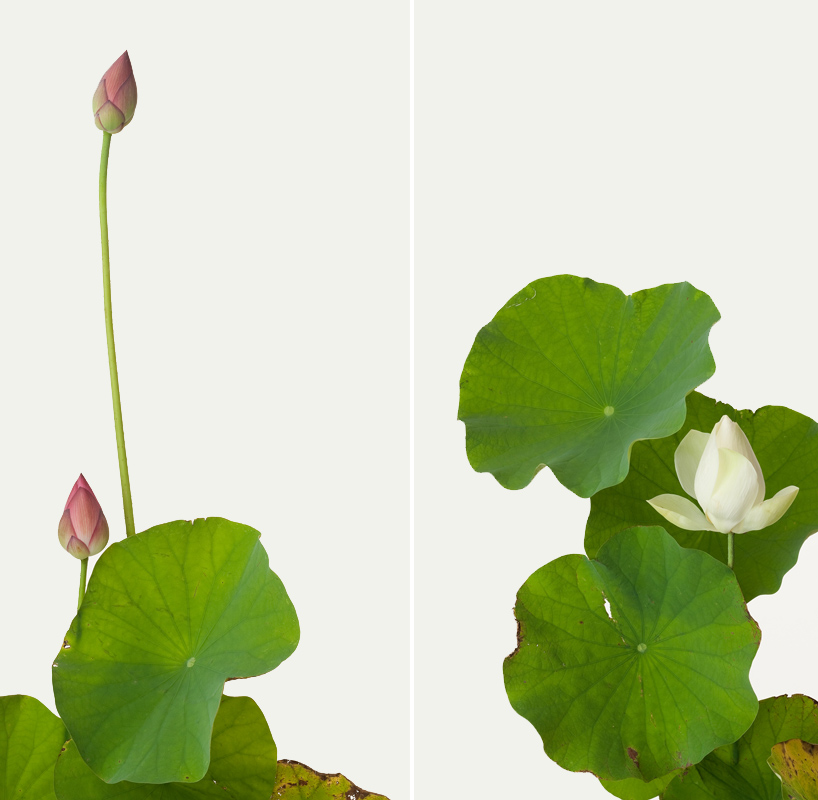پرتره به بازنمود چهره یک جاندار میگن. برای همین در ابتدا اگر صحبت از پرتره یک گل بکنیم ممکنه کمی عجیب به نظر بیاد. پرترهها معمولا حاوی پیام احساس و عاطفه و اندیشه شخص صاحب چهره هستند.
آیا تاکاشی تومو اوکا در مجموعه پرترههایی که از گلها به تصویر آورده تونسته از اون ها شخصیتهایی با عاطفه و احساس بسازه؟ آیا این گلها تونستن در پس هنر هنرمندی مراحل نباتی رو طی کنند و به عالم حیوانی نزدیک بشن؟ قضاوت موفقیت یا عدم موفقیت اوکا با شما. می تونین کارهای بیشتری از اون رو اینجا ببینین.

digital photograph printed on washi and mounted on scroll
courtesy of ippodo gallery
© takashi tomo-oka
takashi tomo-oka's photographs can be described as contemporary nihonga-style pictures. they represent a new form of painting that is carried out not with ink and brushes, but using a digital camera then printing the resulting image on handmade paper. 'I wish to express the beauty of 'kaboku', which is to say, flowers and trees, using photographic techniques to create an image resembling a painting. I want to be able to feel the unadorned beauty of the plants, using a composition consisting solely of the plant and empty space, making the picture as simple as possible.' says takashi tomo-oka. 'there is a big difference between photographs and paintings. in painting the artist looks at the subject, considers it, then passes it through the ‘filter’ of his or her physical body to depict it; photography is much more direct.
photography cannot exist without a concrete subject (in my case flowers). there has to be something material in order for the camera to cut out a moment of its existence. when photographing plants, their natural power and aesthetics are expressed directly without passing through the filter that is me. I photograph plants that are on the verge of decay because they are beautiful. it is my ambition to capture the expressions unique to each plant. if you can feel the power of the plant, then my ability and individuality becomes almost unnecessary'.

'lotus 3' and 'mokuren 4' by takashi tomo-oka, 2011
digital photograph printed on washi and mounted on scroll
courtesy of ippodo gallery
© takashi tomo-oka
from traditional painting, as represented by woodblock prints, to contemporary manga or anime, one element common to all japanese art culture is that all the works are what the artist, takashi murakami, refers to as 'superflat', which is to say they do not utilize perspective but present instead a two-dimensional space. tomo-oka's photographs share this characteristic of appearing flat, but another reason why 'it is difficult to tell whether they are paintings or photographs', is that all extraneous matter has been eliminated, the true essence of the plant being accentuated within the space in the form of lines. as with japanese family crests or kimono design, the motifs have been simplified to the extreme; in tomo-oka's words, he 'photographs the space', and the 'composition' this creates can be truly described as embodying the rimpa style.
another feature of tomo-oka's work is the reality imbued into the flowers and trees. a tiny wormhole in a petal, a leaf that has been reversed, a rotting berry, he presents a true image of nature and moreover, once the photograph has been exposed, he makes virtually no alterations to the image. from early childhood he devoted himself to painting, but the reason why he decided to use the camera as his tool of expression was because he realized that its ability to capture a single moment in time made it ideally suited to depict the ephemeral life of a flower.

'wisteria' and 'maiden camelia' by takashi tomo-oka, 2010
digital photograph printed on washi and mounted on scroll
courtesy of ippodo gallery
© takashi tomo-oka
'my photographs are all tall and narrow, the same proportions as calligraphy paper, as I instinctively found this ratio to be ideal for expressing plants. I think that this may be a result of my experience seeing painted hanging scrolls, fusuma (sliding door panels) and folding screens in temples as a young boy. my parents had a strong influence on me. my father was a traditional basket weaver, and from him I learned the value of honest creativity. when I was small child I used to accompany him up into the mountains to gather bamboo and he taught me a lot about the plants and animals that can be found in nature. I was also able to experience the sounds and atmosphere that exist within nature. I think that a lot of what I felt then is apparent in my work today.' says takashi tomo-oka. 'my mother was a dressmaker and her workroom was filled with fabric and a well-used sewing machine. she always looked happy, making clothes in that room. of course, I am sure she must have experienced hard times, but I feel that she taught me the joy of creating and making things. when I worked as a gardener, I visited the gardens of Kyoto’s famous temples every day. although I saw these gardens daily, they would change their expression in a moment as I looked at them. in particular, japan has four very distinct seasons and the gardens’ appearance would alter completely with each season. they also changed according to the state of the viewer’s mind. each garden possessed a kind of universality that I could always feel while I was working there'.

'hasu (lotus)' by takashi tomo-oka, 2012
digital photograph printed on washi and mounted on scroll
courtesy of ippodo gallery
© takashi tomo-oka
[ طرح انتخاب شده از : Designboom ]





















